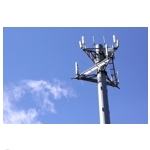 The record breaking auction of AWS-3 spectrum is finally over, said FCC Chairman Tom Wheeler at an FCC monthly meeting today. Wheeler did not reveal who the winners were, but he did say that in total the winners bid nearly $45 billion.
The record breaking auction of AWS-3 spectrum is finally over, said FCC Chairman Tom Wheeler at an FCC monthly meeting today. Wheeler did not reveal who the winners were, but he did say that in total the winners bid nearly $45 billion.
To put that in perspective, one financial firm predicted just before the auction kicked off back in November that the auction could raise “up to $18 billion.”
The unexpectedly high spectrum prices indicate that network operators anticipate soaring mobile data growth to continue. The industry also has recognized that the nation has nearly exhausted new potential sources of vacant spectrum – a reality that also may have driven operators to try extra hard to win this time around.
AWS-3 Auction Details
The AWS-3 band is relatively high frequency spectrum, making it well suited for adding capacity in high-traffic areas – a capability that apparently was seen as highly attractive by operators carrying soaring volumes of mobile data traffic.
A total of 65 MHz of spectrum was auctioned, comprised of several paired bands totaling up to 20 MHz per pair and two unpaired bands – one with 5 MHz and the other with 10 MHz. The majority of the spectrum was auctioned on an economic area basis, which separates the U.S. into 176 separate licenses. But one of the paired bands totaling 10 MHz was auctioned on a cellular market area basis which includes 734 licenses nationwide, making it more appealing to smaller network operators.
One of the positive impacts of the auction is that it raised money to help fund construction of a nationwide mobile broadband network for first responders.
What This Bodes for the 600 MHz Auction
The next major auction should be the voluntary auction of TV broadcast spectrum, now targeted for 2016. That auction will be a complex one, as the broadcasters who currently have licenses for the spectrum will relinquish spectrum only if carriers meet minimum bids established by the broadcasters, who will share auction proceeds with the government. In view of the AWS-3 results, the broadcasters likely will have some high expectations for what they can take away from the event.
Initially the broadcast spectrum auction was scheduled for 2015 but was delayed as the FCC works out details on how it should be conducted. Network operators now may be relieved about the delay, as it will give them more time to raise funding – lots of funding — for the auction.
The TV broadcast spectrum is in the lower frequency 600 MHz band, making it well suited for long-range and indoor coverage.

